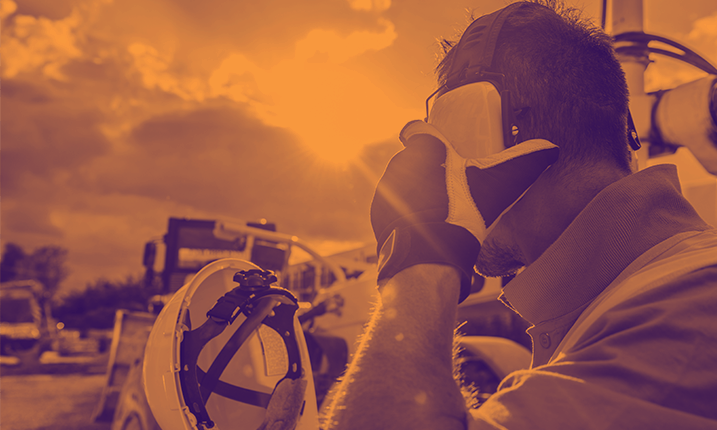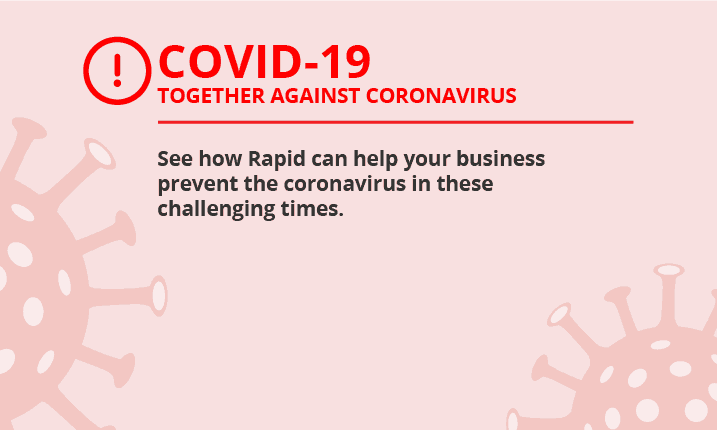

Today is World Hearing Day — an international awareness day for preventing deafness and hearing loss everywhere in the world. Here at Rapid, we are inspired to share our best tips for building noise and hearing protection into your safety inductions, and if you are using Rapid Induct it will be easy to add a workplace noise module into your existing training.
Applying Noise Risk Management
But before jumping into any safety induction or WHS training program we always recommend carrying out a risk assessment. It’s important to remember that any type of safety training is considered an administrative control and should be addressing the risks and hazards actually at your worksite.
Plus, your aim is always to eliminate hazards wherever possible. A risk assessment might identify a noisy generator that is located close to the production floor, and simply moving it to another area might eliminate the risk to 98% of your line staff. Eliminate the hazard, no need for the training.
If you cannot eliminate the noise hazard, your risk assessment might look something like this:
- Identify noise hazards — noisy generator next to the production floor giving off 90-95 dB(A) for 6 hours per day.
- Assess the risk to your workers — 150 workers exposed to varying levels of noise 2-6 hours per day.
- Implement suitable risk controls — switch to a quieter generator that gives off 75 dB(A) and move it to the back of the warehouse.
- Monitor and review the hazard — check workers for hearing loss every 3 months, plus carry out weekly safety audits and spot checks to ensure workers are using their personal hearing protectors correctly.
Once you have done your risk assessment your safety induction and WHS training plan can be developed to address specific issues. For example: helping workers and supervisors understand the importance of job rotation and why they must not stay in the production areas for more than 2 hours per day.
Developing noise hazard training
Let’s say you’ve moved that noisy generator out of the production area to the back of the warehouse, but there are still 15 staff members that are exposed to the noise during their shift. You now want to develop a noise module to include in your safety induction.
As a minimum you should include these four chapters:
1. WHS Responsibilities of workers
- Duty to keep themselves safe while at work. Eg, accidentally breaking their personal hearing protector and reporting the damage to their immediate supervisor for replacement.
- Duty not to do anything that could cause someone else to get hurt. Eg, not making an apprentice work for 12 hours straight next to the generator.
- Duty to follow reasonable instructions. Eg, immediately moving out of a high-risk noise area when requested by the production manager.
- Duty to comply with WHS policies and safety procedures. Eg, wearing hearing protection whenever they are in the warehouse.
And don’t just make a list of these four bullet points in your safety induction, use actual examples your workers can relate to.
2. Hearing loss awareness
Your safety inductions should also ensure your workers have a full understanding of the noise hazards they face every day at work. This will include:
- How hearing loss occurs. Eg, sudden bursts of noise vs prolonged exposure to noise and how this impacts hearing.
- Longterm impacts of hearing loss and how they can reduce a person’s quality of life, both at home and at work. Eg, hearing loss is also linked to fatigue, hypertension, and heart disease.
- Actual job tasks and work areas that have the potential to cause hearing loss. Eg, working next to the noisy generator for prolonged periods.
- The importance of audiometric testing and how it works. Eg, workers undergoing compulsory hearing tests every 3 months,
3. Using noise control measures
Next, give your workers the skills they need to carry out job tasks safety — and in particular — use noise control measures. We recommend videos that demonstrate:
- How to take a noise reading in different work areas. Eg, taking the reading in an open area away from reflective surfaces.
- How to select, fit and wear personal hearing protectors so they offer full protection. Eg, how to use compressible earplugs so they remain soft and pliable.
- How to clean and maintain personal hearing protectors. Eg, ensuring ear-muff seals are intact and headband tension hasn’t been compromised.
4. Reporting defects and concerns
Make sure your WHS training and inductions include procedures for reporting defects, hazards, and safety concerns. Suggestions include:
- How to report defects in hearing protectors and noise control equipment.
- How to identify when personal hearing protectors need replacing.
- How to report a personal health concern or suspected hearing loss in another worker.
Delivering your WHS training
Once you’ve developed your training outline, create a noise module for your safety inductions or on-the-job training. Rapid Induct allows you to design sophisticated multimedia courses for your staff and contractors. You could use:
- Text — step-by-step instructions for fitting personal hearing protectors.
- Videos — a supervisor demonstrating how to take a noise measurement.
- PDF downloads — inspection checklist for personal hearing protectors.
- Audio — pitch samples demonstrating different frequencies and how they impact overall hearing.
Once the courses are created and published into Rapid Induct you can assign your Noise Module to specific job roles and contractors. Every staff member or contractor with that job role will be flagged to complete the training when they first come onto the jobsite — or at regular review intervals.
Final thoughts
Today is World Hearing Day, but don’t wait until next year to do step up your workplace noise protection controls. Here are two immediate steps you could take to improve noise safety today:
1. Contact our sales team for a live demo of Rapid Induct — our award-winning work health and safety software.
2. Download the Model Code of Practice Managing noise and preventing hearing loss at work from the Safe Work Australia website.
And remember, training alone is not a suitable control measure for workplace noise. Safety inductions and WHS training should always support other noise controls.







